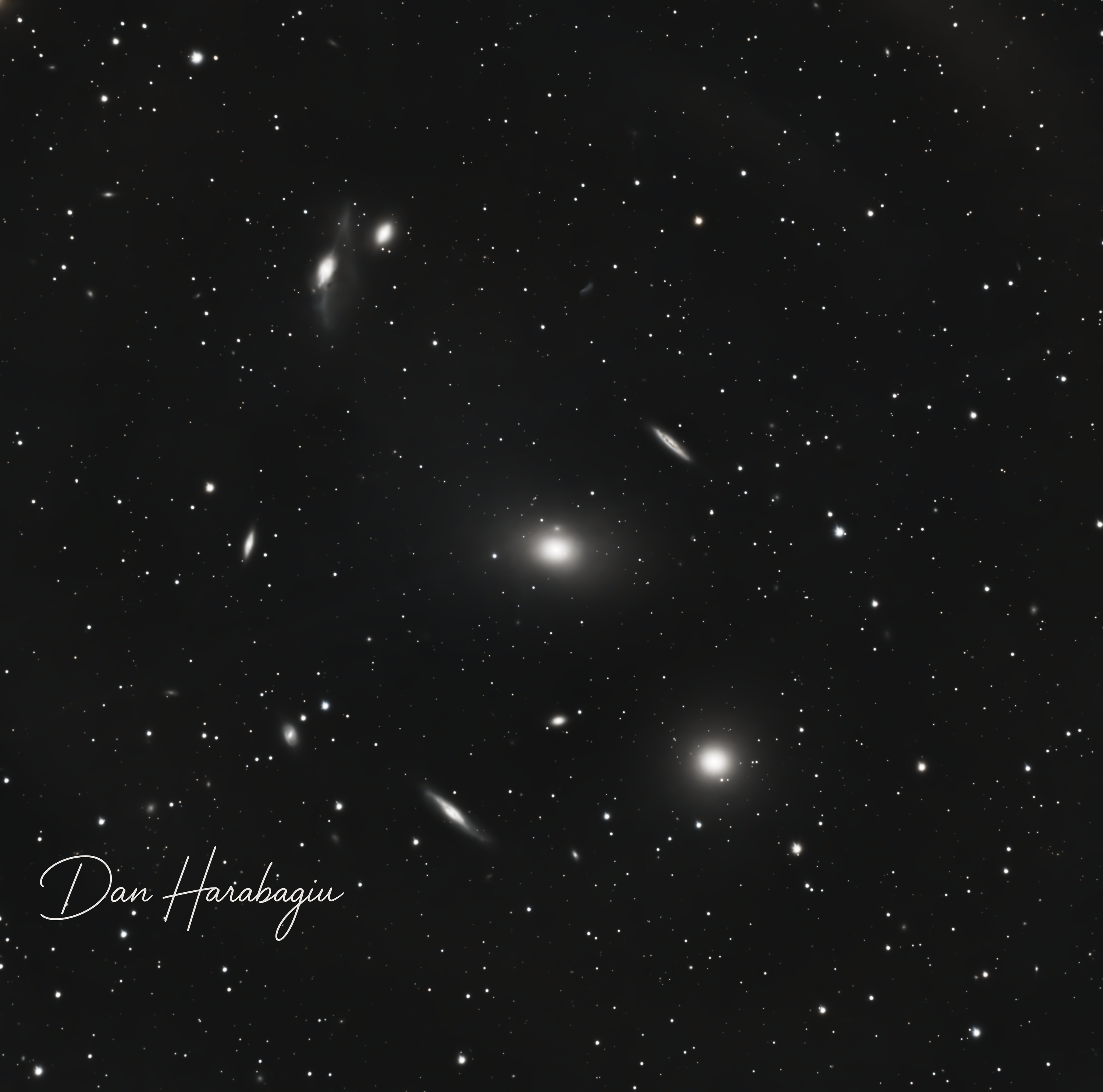🌀 Into the Heart of the Virgo Cluster: M86 and Friends
📍 Target: M86 Region, Virgo Cluster
🌌 Constellation: Virgo
🔭 Imaged by: Dan Harabagiu
🖼️ The Image
| Annotated View | Natural View |
|---|---|
 |
 |
🔭 Equipment Used
- Mount: Sky-Watcher EQ5 Pro
- Telescope: TS-Optics 80PHQ (80mm f/6.8 Quintuplet APO, 544mm focal length)
- Camera: SVBONY SV605MC (IMX533 Mono, 3008×3008)
- Filter Wheel: Starlight Xpress Mini USB (5× 1.25", T2-T2)
- Filters: L, R, G, B
- Guide Scope: None – using OAG
- Guide Camera: veLOX 178 C (Color)
- Focuser: Motorized Autofocuser
- Software: NINA for acquisition, PHD2 for guiding, PixInsight + Photoshop for processing
📸 Acquisition Details
- Luminance: 40 × 180s @ gain 200
- Red, Green, Blue: 20 × 180s each @ gain 200
- Total Integration Time: ~5h
🌌 The Scene
This deep-sky photo captures one of the most galaxy-rich regions visible from Earth — the Virgo Cluster. Dominated by elliptical galaxy M86 near the center, this field of view contains dozens of galaxies, including many members catalogued by Messier, NGC, and IC.
In the annotated version, you can easily spot:
- M86 and M84 – the twin ellipticals at the core of the cluster.
- NGC 4388 – a spectacular edge-on spiral below M86.
- The Eyes (NGC 4435 & NGC 4438) – a gravitationally interacting galaxy pair.
- NGC 4402 – a tilted spiral with visible dust lanes.
- A wealth of IC galaxies in the periphery.
🌠 Fun Facts
- M86 is blueshifted, meaning it’s moving toward us — a rarity among galaxies!
- The Virgo Cluster lies about 54 million light-years away.
- Over 1300 galaxies are part of this cluster, though only a fraction are visible here.
💬 Final Thoughts
This image is a window into a dense galactic metropolis, where interactions, mergers, and dynamic motion shape the structure of the universe at grand scales. Seeing so many galaxies in a single frame puts into perspective just how vast — and connected — the cosmos truly is.
Let me know in the comments:
🔭 How many galaxies can you spot?